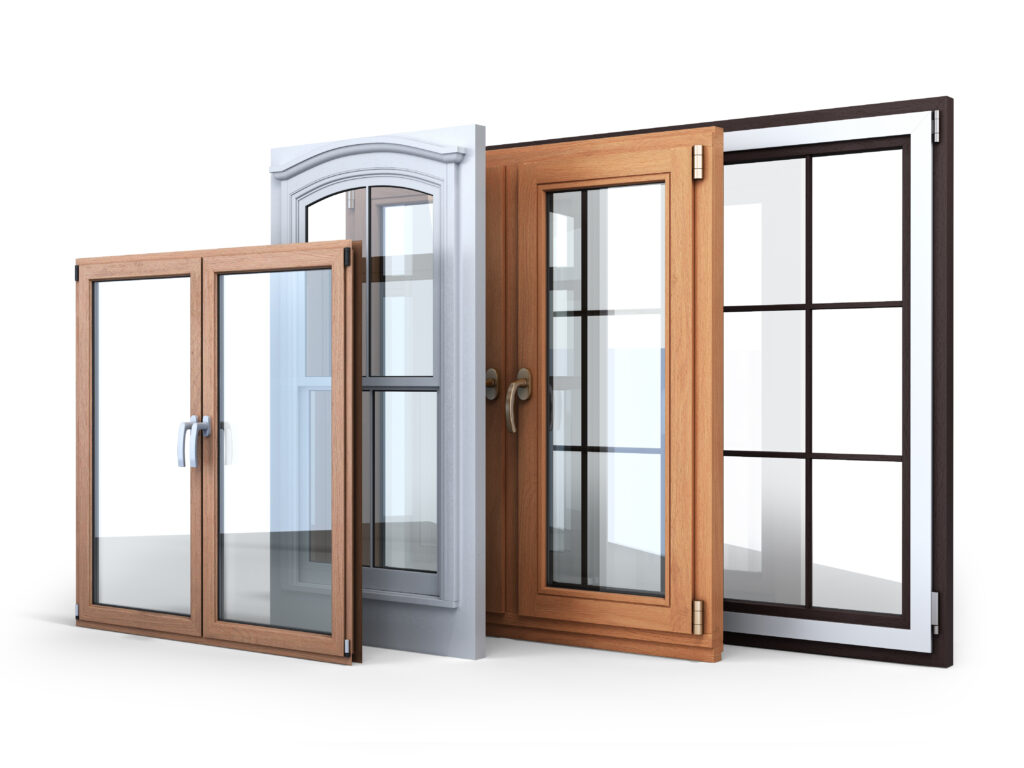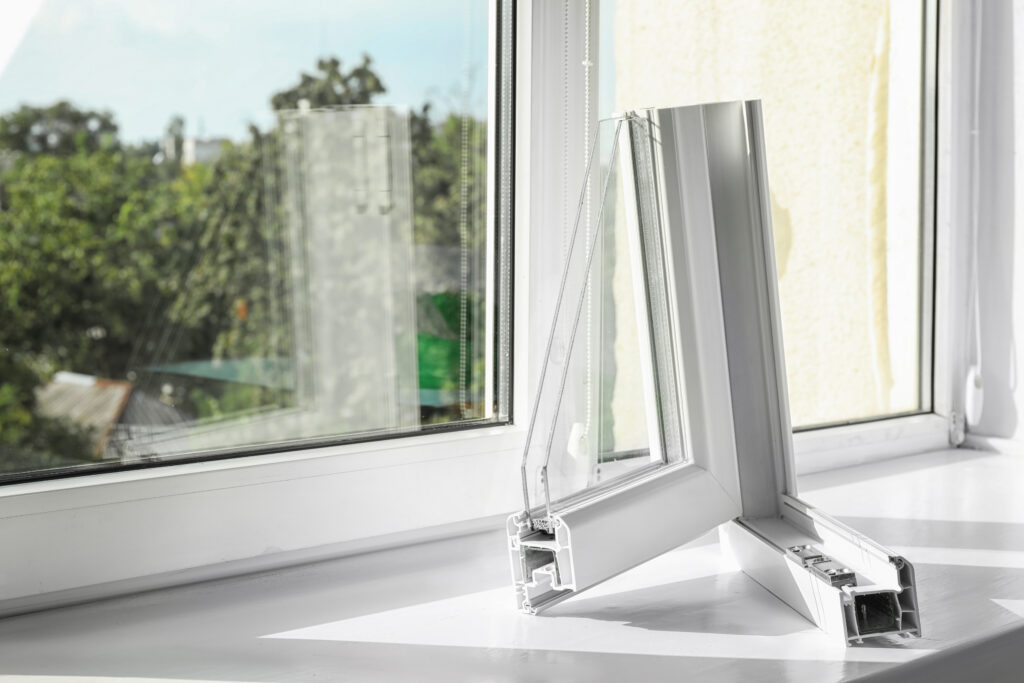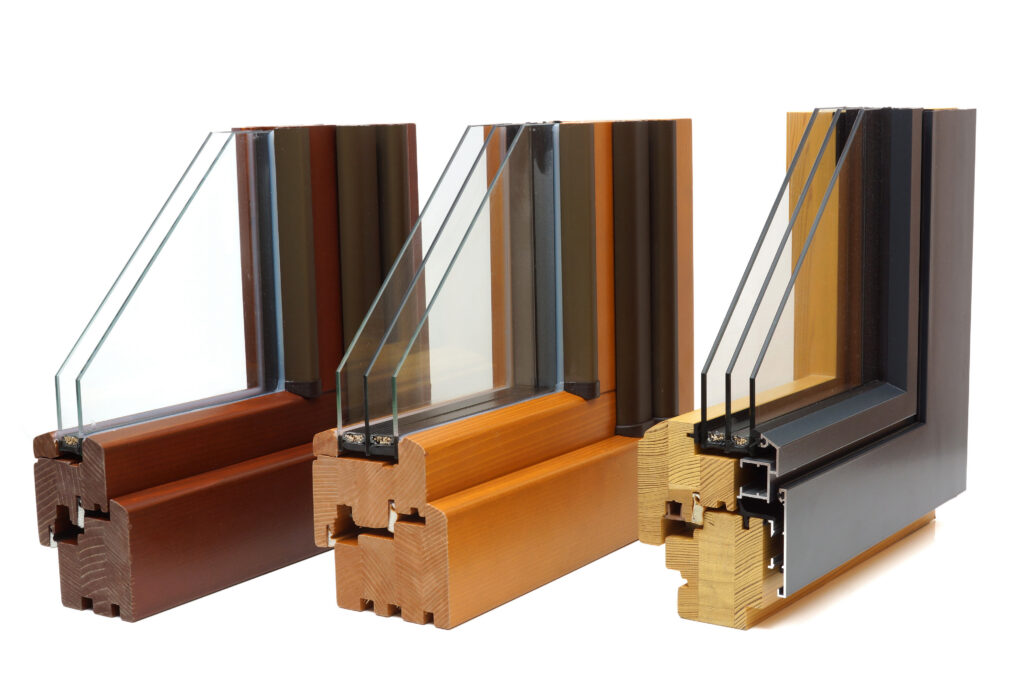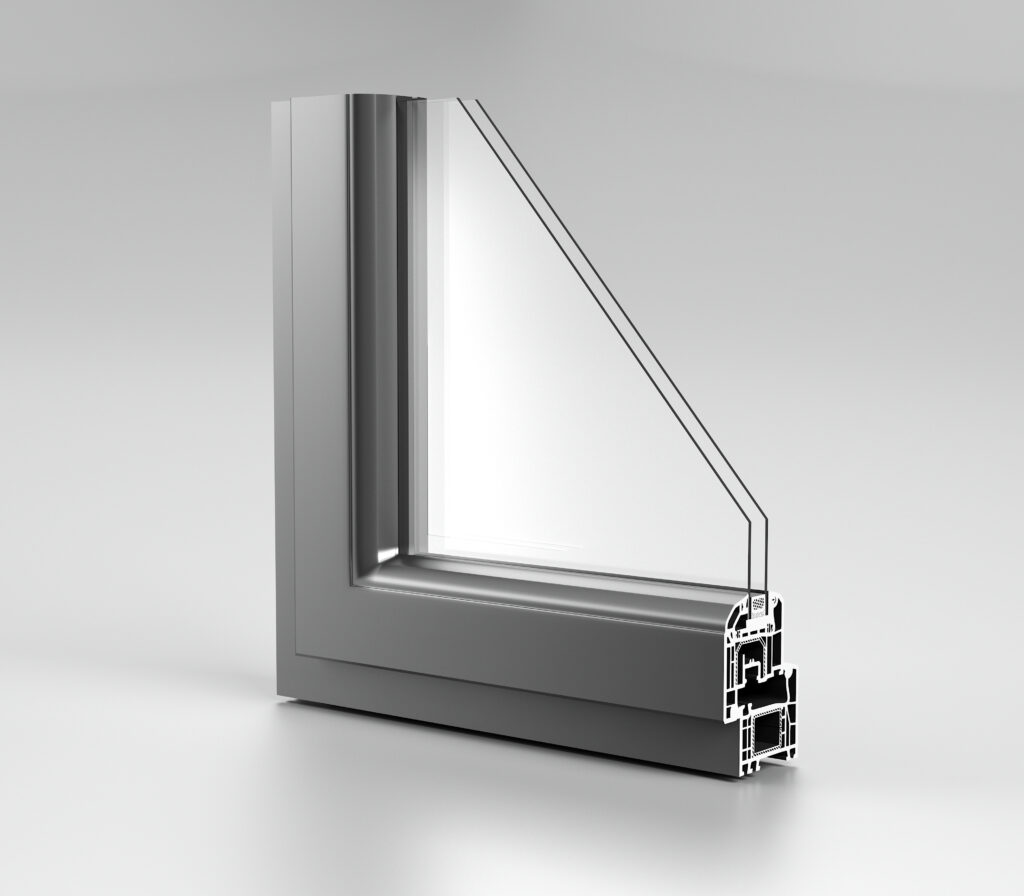Window Basics: Choosing a Frame Material
Deciding which new windows to install can be a deceptively complicated process. It involves making decisions ranging from the glass type and quality to frame color and cost. Frame material is one of the most important of these decisions; it’s a major contributing factor to the durability of your window.
Frames are often made of one of four materials: vinyl, wood, aluminum, or fiberglass. Each material has different pros and cons and a different stylistic purpose.
Vinyl
Vinyl is one of the most common replacement window frame types for homes in the US. It is made from polyvinyl chloride (more commonly known as PVC–the plastic your pipes are made out of), making it both durable and affordable.
Pros
- Highly customizable in terms of shape and size.
- Lasts from 20-30 years, and often comes with great warranties.
- Durable in pretty much all weather except for extreme heat.
- Easy cleaning and maintenance: requires only an annual scrub with soap and water.
Cons
- Depending on the installer, you may get a low-quality vinyl window frame that will deteriorate easily.
- Vinyl window frames are susceptible to extreme temperatures, particularly heat.
- Aesthetically, vinyl windows are rather plain, which may be either a pro or con depending on your vision for your home.
Cost
- If the cost of the frame is the deciding factor, vinyl windows are the way to go. They provide a low cost for generally good quality.
Wood
Wood is especially popular in window frames because of its traditional vibe and durability.
Pros
- Great for insulation–wood is a good insulator. Choosing wooden frames will likely lower your energy bill.
- Durable in drier weather, but are treated to endure even in damper climates.
- Lasts between 10 and 20 years, and generally also comes with a good warranty (although this depends on the installer).
- Very easily replaceable, if one starts to warp or rot.
- Can be coated in aluminum or vinyl to increase durability and decrease their maintenance requirements.
- Yes, vinyl frames are more affordable, but a beautifully polished and painted wooden window frame can not be beat in the appearance category. Wooden frames are classic.
Cons
- Susceptible to termites or other insects trying to make a home in your windows.
- Generally a higher-maintenance frame: warping, rotting, shrinkage, and swelling are all possible if they aren’t properly maintained.
- Require regular painting and refurbishing.
Cost
- Wooden frames aren’t quite as affordable as vinyl, especially if you get an aluminum or vinyl covering. However, if your priorities lean more towards aesthetics, the cost may be worth it.
Aluminum
Aluminum frames–and other metal frames–are also very common. Because of the increased strength of metal over plastic or wood, the frames can be much thinner, which gives them a more modern appearance.
Pros
- Low maintenance with little to no care required.
- Incredibly strong and durable: able to protect the house from strong weather conditions.
- Can dampen noise from the outside. While the soundproofing isn’t complete, aluminum frames do reduce outside noise more than vinyl or wood.
Cons
- Insulation is one of the big drawbacks of metal frames because it isn’t inherent in the material. In order for your windows to have sufficient insulation to protect and keep your energy bill low with metal frames, you have to add a thermal break.
- Uninsulated windows can lead to condensation, which, in turn, can cause corrosion. This is uncommon, but still a possibility.
Cost
- Aluminum or metal frames generally cost more than vinyl frames, but less than wood.
Fiberglass
Fiberglass window frames are the least common of the four, but they still have many great qualities that make them worth considering.
Pros
- The most durable of the four; can withstand very temperamental weather conditions.
- Low maintenance. Simple as that.
- Even more insulating than wood.
- Able to reduce outside noise significantly.
- None of the window frames can offer warranties quite as high as fiberglass–which can go up to 50 years!
Cons
- Looks about the same as vinyl, but costs more.
- Not many companies carry it; it may not be accessible for everyone.
Cost
- Fiberglass windows are more expensive than wood and vinyl, but less expensive than metal (under most manufacturers).
Making the Choice
Don’t be afraid to step out of your comfort zone and try something new for your replacement windows. Keep in mind the pros, cons, and costs of each window frame material type. Explore multiple manufacturers to find the one that offers what you want, for the price you want, and with the quality of materials that you deserve.
References
https://www.energy.gov/energysaver/window-types-and-technologies
https://www.homestratosphere.com/types-of-windows/
https://www.burnettinc.com/blog/windows/4-most-common-window-frame-materials/
https://superiorwindowcompany.com/whats-the-best-window-frame-material/
https://www.windownation.com/blog/post/why-choose-vinyl-windows-for-my-home/
https://dengarden.com/home-improvement/The-Advantages-and-Disadvantages-of-Wood-Windows




